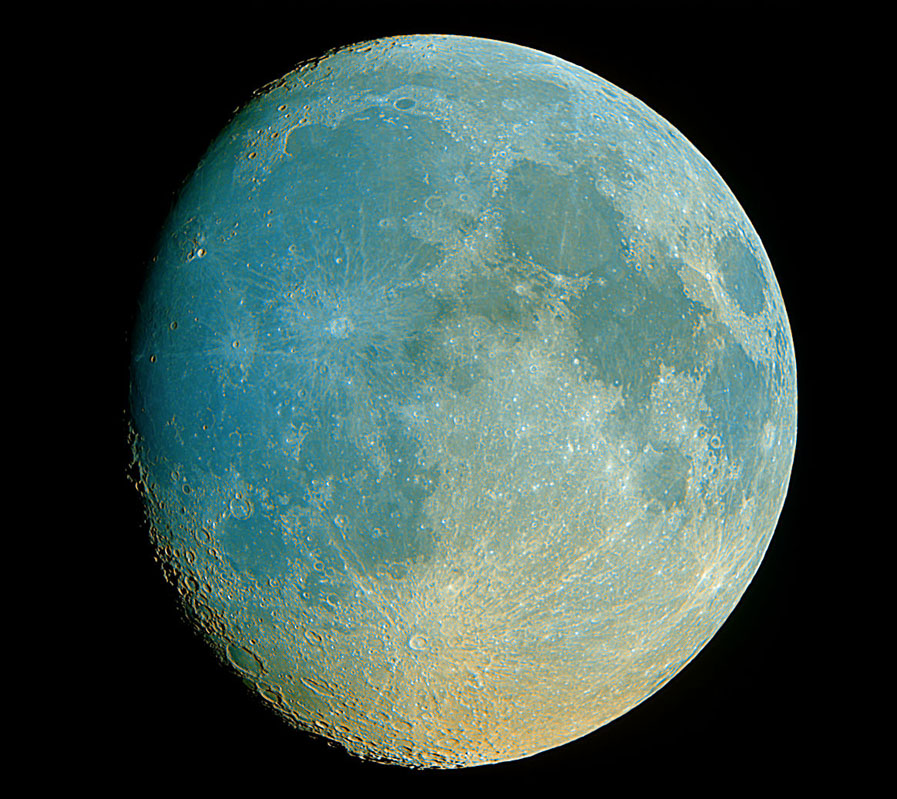March 25, 2018
Blue Moon
Originally published November 7, 2008

image by Tom Bash
We see the Moon with the limitations of our eyes. But with instruments we can look more closely in ways that go beyond human sensory abilities. We do it all the time when we enhance images with PhotoShop. Tom has found another direction to explore. He has used a polarizing filter to make this image, with one exposure (shown here as red) with the filter in a N-S position and a second (blue) with the filter aligned E-W. A third, green image was obtained by averaging the first two. The maria and highlands have different colors suggesting differences in their polarization abilities. There have been a lot of polarization studies of the Moon, mostly before the advent of multi-spectral imaging. Typically these studies were done with a photometer so only a single spot was measured. Pre-Apollo polarization provided information about the lunar surface - it seemed to be granular, like volcanic ash. These studies contributed little to the real understanding of the Moon. But in 1992, famed French astronomer Audouin Dollfus conducted imaging polarization experiments and made an observation at Langrenus that seems valid, but I don't think that it has been repeated. He found a polarization brightening which he interpreted as due to gas escape lofting lunar dust into space. Ten years ago one of my graduate students repeated that experiment but never detected the polarization. As Tom has demonstrated it is easy to take polarization images so it might be worth trying high resolution polarization studies of Langrenus. Greater sensitivity will come from differencing the two polarization images, and dividing that difference by the sum of the images yields the degree of polarization. If it is only transient effect, observing different times will be necessary.
Chuck Wood
Sorry about yesterday - I was exhausted from finishing a proposal, getting out the vote for Obama,& watching election returns until 1:30 AM. I was too happy (and tired) to feel guilty.
Technical Details
October 12, 2008; 5:20 UT. 80 mm f/6 APO, Infinity 2-1M, polarizer filter.
Related Links
More polarization observations of the Moon.
Yesterday's LPOD: Unequal Twins
Tomorrow's LPOD: Younger Farside
COMMENTS?
Register, Log in, and join in the comments.



